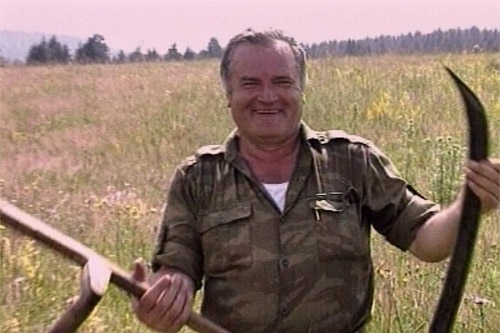Home
MLADIC’S AND KARADZIC’S INDICTMENTS TO BE BROUGHT INTO LINE
The OTP in The Hague filed a motion to amend the current indictment against Ratko Mladic to bring it into line with Karadzic’s indictment; ultimately, this should make it possible to join their cases should the former commander of the VRS Main Staff appear in The Hague soon
 Image from the film "Rise and Fall of General Mladic"
Image from the film "Rise and Fall of General Mladic" While chief prosecutor Serge Brammertz was in Belgrade, the Tribunal’s OTP filed a motion to amend the current operative indictment against Ratko Mladic. The current indictment against the former commander of the VRS Main Staff, the most wanted fugitive from international justice, was issued in October 2002.
The proposed amendments to the indictment aim to bring it into line with the Tribunal’s jurisprudence and new evidence the OTP was able to gather since 2002 when two indictments against Mladic, issued in June and November 1995, were joined. The Mladic indictment is being harmonized with the Karadzic indictment to allow the two cases to be partially or completely joined if Mladic appears in The Hague soon. Instead of the 15 counts, the new indictment charges Mladic in 11 counts with the same crimes as Karadzic: double genocide, crimes against humanity and violations of laws and customs of war.
The indictment alleges that Mladic was a key personality – together with Karadzic – in four separate but intertwined joint criminal enterprises. The first JCE is ethnic cleansing aimed at forcible and permanent removal of Bosnian Muslims and Croats from large areas in BH. In eight BH municipalities this effort reached the level of genocide. In three remaining joint criminal enterprises Mladic is charged with terror campaign against the civilians in Sarajevo, taking UN staff hostage in May and June 1995 and genocide in Srebrenica in July 1995.
As in the Karadzic indictment, the genocide charges are divided into two separate counts. The first count refers to 1992 and covers eight BH municipalities: Bratunac, Foca, Kljuc, Kotor Varos, Prijedor, Sanski Most, Vlasenica and Zvornik. The second genocide count covers the period from July to November 1995 and describes the killing of about 7,000 Muslim men and boys and inflicting serious physical and mental suffering on thousands of women, children and elderly who were forcibly transferred from the Srebrenica enclaves.
Despite reducing the number of counts from 15 to 11 in the new indictment, the scope and the substance of the charges against Mladic remain unchanged. The new indictment amends and clarifies the allegations that pertain to individual criminal responsibility of the accused and delineates more precisely the character of his command responsibility. Finally, since final judgments have been handed down in other cases for all crimes in the indictment – except for taking UN staff hostage, the crime-base evidence would be admitted in the form of adjudicated facts and written statements or transcripts of previous evidence of the witnesses. This would reduce significantly the time necessary for the prosecution to present its case.
